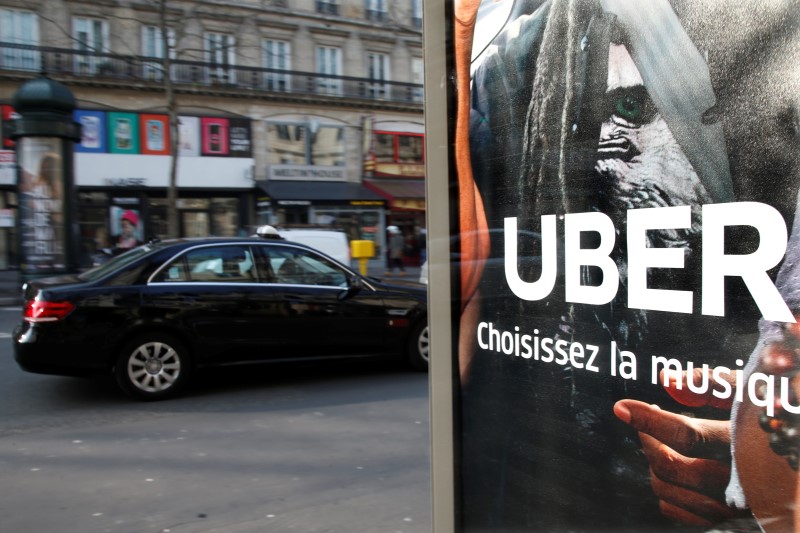
© Reuters. Uber has a long runway for growth, Lyft profit constrained and DoorDash share gains to slow — Jefferies
By Sam Boughedda
Jefferies analysts assumed Uber (NYSE:) with a Buy rating, Lyft (NASDAQ:) with a Hold rating, and initiated DoorDash (NYSE:) with an Underperform rating in a note to clients on Monday morning.
The analysts also cut the firm’s price target for Uber to $38 from $50 per share and Lyft to $12 from $16, while setting a $37 price target for DoorDash.
“We estimate UBER’s core Rideshare/Restaurant Delivery businesses each operate in ~$1 trillion addressable markets, which implies just ~5% penetration and a long runway for growth,” the analysts wrote. They added that the firm believes Uber’s “dominant scale and network effect” supports greater reinvestment into customer experience and adoption, which should prompt frequency and stickiness and “grow market share over time.”
Furthermore, they believe Uber’s multiple product offerings and geographic diversity expand Uber’s total addressable market while “driving cross-sell opportunities and reducing macro risk.”
On Lyft, the analysts declared that the company’s profit growth is constrained by competition and insurance. “Smaller scale and a focus on U.S. Rideshare limits cross-sell opportunities and reinvestment capabilities, especially with insurance costs approaching 30% of Revenue. The result is risk of further market share losses, which decreased 200-300 bps during 2022,” they said.
DoorDash was started with an Underperform rating as slowing growth conflicts with a peer-high multiple, the analysts stated.
“We estimate DASH’s market share in U.S. Restaurant Delivery increased from 18% in ’18 to 56% in ’22 (53% in ’21). However, we expect share gains to slow given past gains came from players that are now much smaller (48%/15% ex-DASH/UBER share in ’18/’22). We also expect the overall category to experience more modest growth (11% ’22-’24 CAGR vs. 28% ’20-’22 CAGR) following a pull forward in adoption during the pandemic and less contribution from excess food inflation. The result of smaller share gains and a moderating category is slower growth for DASH’s Revenue,” they added.


Be the first to comment